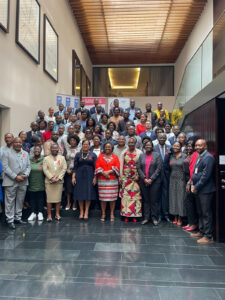Tulani Ngwenya
VIENNA, Austria — The United Nations Office on Drugs and Crime (UNODC) unveiled its World Wildlife
Crime Report 2024 on Monday, May 13, 2024, in Vienna, Austria. This third installment, following the 2020 and 2016 reports, delves into current trends in the illegal trade of wildlife species listed under the Convention on International Trade in Endangered Species of Wild Fauna and Flora (CITES).
The report provides a comprehensive analysis of the harms and impacts of wildlife crime, explores the factors driving these trends, and evaluates the effectiveness of various interventions aimed at curbing wildlife trafficking.
CITES Secretary-General Ivonne Higuero praised the report, stating, “World Wildlife Crime Reports are uniquely insightful and are a powerful tool to inform responses to the devastating consequences of
wildlife crime.
Data-driven research is crucial and forms a strong foundation for policymaking. This research drives factual decision-making and targeted interventions to combat this global threat that affects people and the planet.”
The 2024 report emphasises the need for tailored solutions to combat wildlife trafficking, highlighting that the drivers of trafficking vary significantly across different wildlife commodities.
This edition places new emphasis on understanding the causes and impacts of wildlife trafficking at a global level. The report underlines the importance of continued research to gain insights into criminal structures, financial incentives, and evolving demand patterns, which can inform more effective interventions.
Based on seizure data from 162 countries and territories between 2015 and 2021, the report documents
illegal trade affecting approximately 4,000 plant and animal species, with 3,250 of these listed in the CITES Appendices.
The report presents alarming evidence that illegal trade has contributed to local or global extinctions of species, disrupted ecosystems, and undermined socioeconomic benefits derived from nature. Case studies in the report cover a range of species impacted by illegal trade, including live orchids, dried seahorses, rosewood timber, African elephant ivory, African rhinoceros horn, and pangolin scales. These case studies illustrate the diverse nature of wildlife trafficking and the wide-reaching consequences for biodiversity and human communities.
CITES Parties file annual national reports on illicit trade, which are then combined into the CITES Illegal
Trade Database, which is kept up to date by UNODC. This is where most of the information for the report originates. This database serves as a vital resource for CITES Parties, providing accessible data to guide decision-making and support the development of targeted, evidence-based responses to wildlife crime.
CITES is pivotal in regulating international trade in wild animal and plant specimens listed in its
Appendices, working closely with UNODC and other organisations such as INTERPOL, the World
Customs Organisation (WCO), and the World Bank Group. These entities form the International Consortium on Combating Wildlife Crime (ICCWC), which aims to strengthen criminal justice systems
and provide coordinated support at national, regional, and international levels. The 2024 World Wildlife Crime Report will be an essential resource for ICCWC and CITES Parties worldwide, informing future research and analysis efforts.
The World Wildlife Crime Report 2024 underscores the critical need for continued and enhanced
international cooperation, innovative research, and tailored interventions to combat the complex and
evolving threat of wildlife crime. As the global community grapples with biodiversity loss and ecosystem disruption, the insights provided by this report will be instrumental in shaping effective conservation
policies and strategies.










